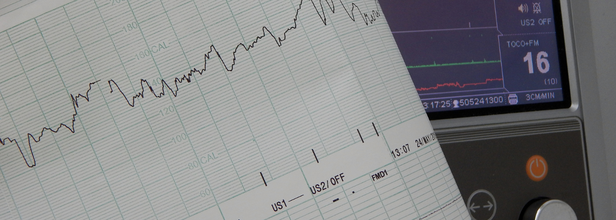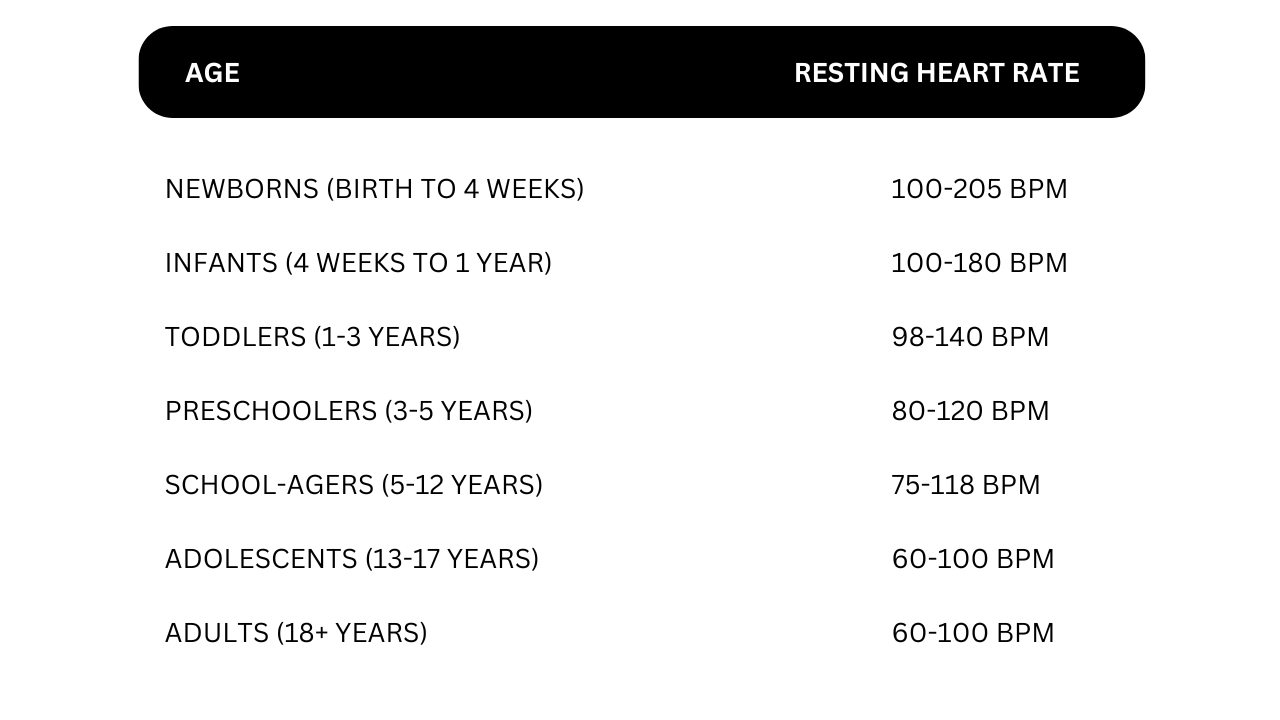- Health Conditions A-Z
- Health & Wellness
- Nutrition
- Fitness
- Health News
- Ayurveda
- Videos
- Medicine A-Z
- Parenting
What's Your Pulse Rate Should Be At Every Age

Credits: Canva
Are you familiar with the feeling of your heart pounding in your chest, your blood pulsing through your veins or when the frequency increases as you get scared or stressed or work out a lot at the gym? This is how your heart reacts to different situations. But how many have you ever noticed your heart rate when you are resting?
Resting heart rate or pulse is the number of times your heart beats per minute when you are at rest. It is also an essential sign that provides a glimpse into your heart and overall health, especially your age, says the American Heart Association (AHA).
Resting heart rate can change as per one's age as there is no one-size-fits-all metric. Other than age, there are other factors such as stress, hormones, anxiety, medication and physical activity that can also contribute to your heart rate.
As per AHA, a resting heart rate between 60 to 100 beats per minute (bpm) is considered "normal" in most adults. Athletes or very active individuals may have a resting heart rate as low as 40bpm, as Michael Phelps, an Olympian swimmer maintained 38bpm at the peak of his career.
This means the harder your heart has to work to pump blood throughout the body while you are not exerting yourself, the higher your resting heart rate will be. This is why a lower resting heart rate indicates a healthier body. Experts also suggest that the more exercise and regular cardiovascular exertion that you have, the lower your resting heart rate will be.
Normal Resting Heart Age

How to check your pulse?
- Locate the artery on your inner wrist of either arm and place your index and middle fingers on the artery. You should feel each beat against your fingers.
- Count the number of beats in 60 seconds.
What happens if your resting heart rate is too high or low? If you are getting sick, then you may notice a higher pulse.
If you have a pulse over 100bpm is called tachycardia and can be brought on by anything from dehydration or excessive caffeine intake, to smoking or anxiety. The AHA recommends talking to your doctor in case you notice abnormal heart rate,
Winter Pollution Could Trigger Dangerous Chest Pain, Cardiologist Warns

Credits: Canva
For decades, cardiologists have noticed a clear seasonal trend. Heart attacks tend to rise during the winter months. Patients who already have heart conditions often see their health decline in the cold season, requiring more frequent and longer hospital stays. As winter approaches, pollution levels spike dramatically, making breathing more difficult, and for good reason.
Multiple factors combine to create this seasonal risk. We spoke to Dr. Vikash Goyal, Senior Cardiologist at Paras Health, Gurugram, to understand why chest pain becomes more common in winters.
Why Does Winter Trigger More Heart Risks?
Traditionally, this increase in heart-related issues has been linked to the body’s response to cold temperatures. Winter causes blood vessels to constrict and can lead to higher blood pressure, while reduced sweating may cause salt to build up in the body.
Less physical activity, along with a tendency to eat heavier, richer foods, adds to weight gain and raises blood sugar and cholesterol. Together, these factors increase the workload on the cardiovascular system, contributing to the rise in cardiac events during the winter months.
How Does Winter Pollution Trigger Chest Pain?
One constant in North Indian winters is a sharp rise in air pollution that comes alongside dropping temperatures. As the air cools and circulation slows, a thick layer of smog lingers over many cities. This pollution is a mix of vehicle emissions, construction dust, industrial smoke, and seasonal crop stubble burning. The simultaneous rise of air pollution and winter cardiac hospitalizations is too pronounced to ignore.
Dr. Vikash Goyal explained that air pollution has a significant but often overlooked effect on heart health. The heart relies on clear blood flow to support all major organs. When polluted air enters the lungs, tiny particles enter the bloodstream, triggering inflammation throughout the body. This narrows and stiffens blood vessels, forcing the heart to work harder while reducing oxygen supply to vital organs like the brain and kidneys.
He said, “This can lead to headaches, fatigue, dizziness, or worsening kidney function. During winter, the combination of cold temperatures and trapped smog thickens the blood and raises blood pressure, putting extra strain on the heart.” This explains why chest pain, breathlessness, and other cardiac issues increase during winter pollution season. Protecting yourself from polluted air isn’t just about lungs—it’s about safeguarding your whole cardiovascular system.
How Do PM2.5 Particles Harm The Cardiovascular System?
According to the World Health Organization, PM2.5 particles entering the bloodstream can cause multiple harmful effects on the heart. They trigger inflammation, destabilize cholesterol plaques, and increase the risk of plaque rupture, a common cause of heart attacks. They also create oxidative stress, producing free radicals that damage blood vessels and speed up atherosclerosis. Additionally, PM2.5 thickens the blood and makes platelets stickier, raising the chance of clots forming in blood vessels.
How To Protect Your Heart During Winter Pollution?
To reduce the impact of winter pollution on your heart, limit outdoor exposure on high-pollution days, wear N95 or N99 masks when going out, and use air purifiers and humidifiers indoors. Stay hydrated, eat foods rich in antioxidants, and keep an eye on your health.
If you notice persistent chest pain, tightness, or other concerning symptoms, seek medical help immediately.
Four Medical Checks That Can Spot Cancer Before Symptoms Appear

Credits: Canva
Receiving a cancer diagnosis is scary, but what often causes greater harm is the delay in finding the disease and starting treatment. Many patients visit doctors only when symptoms become too obvious to ignore, by which time the illness has already advanced and is far harder to control. In most cases, cancer is caught late not because it hides well, but because people skip routine screenings.
In an Instagram video shared on November 6, Dr Jayesh Sharma, consultant surgical oncologist at ITSA Hospitals, spoke about four key tests that can help detect cancer early and reduce the number of late-stage cases.
4 Tests That Help Catch Cancer Early
Dr Sharma explained that there are four screenings everyone should consider. He noted that these tests can help identify cancer at the very first stage, when abnormal cells have formed but have not yet begun to spread. Detecting it at this point allows doctors to remove the cells completely, giving patients an excellent chance of recovery.
Mammography
Dr Sharma advised getting a mammogram once around the age of 40. He mentioned that while yearly tests are often suggested, most people do well with a screening every two years.
Cervical Cancer Screening
Cervical cancer remains one of the most common cancers in women. According to Dr Sharma, the Pap smear is a reliable way to catch early changes in cervical cells, even before symptoms appear.
Stool Test
He also recommended a stool test as a simple way to look for signs of stomach cancer. The earliest sign of trouble in the stomach is often hidden bleeding, which can be picked up through this test.
Chest CT Scan
For people who have been heavy smokers over many years, Dr Sharma suggested a chest CT scan. This group faces a higher chance of lung cancer, and a scan can help identify changes in the lungs at an early stage.
Symptoms Of Cancer
Warning signs of cancer can appear in many ways, and the symptoms usually depend on which part of the body is involved.
Some broad symptoms that may point to cancer, though they can occur in many other conditions as well, as per Mayo Clinic include:
- Fatigue that does not improve
- A lump or thickened area you can feel beneath the skin
- Unexpected weight loss or gain
- Changes in the skin, such as darkening, redness, yellowing, slow-healing sores, or new changes in moles
- Altered bowel or bladder habits
- A cough that lingers or ongoing breathing trouble
- Difficulty swallowing food
- A rough or hoarse voice
- Regular indigestion or discomfort after meals
- Ongoing, unexplained joint or muscle pain
- Recurring fevers or night sweats without a clear cause
- Bleeding or bruising without explanation
When To Seek Medical Advice
You should contact your doctor if any symptom continues for a long time or gives you reason to worry.
If you feel fine but are anxious about your cancer risk, speak with your doctor about it. They can guide you on the screening tests or checks that may be suitable for you
Can Egg Freezing Reduce Your Egg Quantity? Doctor Explains

Credits: Canva
Recent data from the Human Fertilisation and Embryology Authority show a sharp rise in the number of women opting for egg-freezing. Yet the subject remains clouded by many misunderstandings. The decision itself is not simple. It involves emotional questions, significant costs and the physical demands of treatment. One common misunderstanding is the belief that egg freezing can harm egg quality, when the procedure does not lower the inherent quality of the eggs you already have.
We got in touch with Dr Shaweez Faizi, Fertility Specialist, Nova IVF Fertility, Mangalore, who told us more about the same.
What Is Egg Freezing?
Egg freezing, also called oocyte cryopreservation, is a fertility option in which a woman’s eggs are collected, frozen, and kept for future use. The steps include taking hormones to help the ovaries produce multiple mature eggs, retrieving those eggs through a short clinical procedure, and freezing them through a rapid cooling method known as vitrification.
As per Healthline, the frozen eggs are then stored in liquid nitrogen. When pregnancy is planned later, the eggs are thawed, fertilized in a laboratory, and the embryo is transferred to the uterus.
How Egg-Freezing Works?
The journey begins with roughly 8 to 12 days of hormonal tablets and injections that help several follicles grow at once. Dr Shaweez Faizi told us that doctors then use an ultrasound-guided needle to retrieve the mature eggs under light anaesthesia. The eggs are preserved through vitrification. The medication does not pull eggs from future years. It acts only on that month’s cohort, which is why medical bodies consider the procedure safe and ethically sound.
Can Egg Freezing Lower Your Egg Quantity?
Dr Shaweez Faizi told us that egg-freezing does not drain your ovarian reserve for life. The process collects only the group of eggs that your body was already preparing to release in that month. Some women notice a short-term dip in AMH after the procedure, but this usually settles with time. The stored supply inside the ovaries remains unchanged.
For those unversed, AMH, or Anti-Müllerian Hormone, is commonly used to assess ovarian reserve, meaning the approximate number of eggs still present in a woman’s ovaries.
Anti-Müllerian Hormone and Reserve
AMH is often treated as a marker of ovarian reserve, though it naturally varies. Studies show that a small number of women experience a temporary fall in AMH after stimulation, followed by a return to baseline. Specialists usually advise repeating the AMH test a few months after retrieval to get an accurate picture.
Egg Freezing Success Rates
Age at the time of freezing and the number of eggs stored have the strongest influence on outcomes. Global data suggest that women under 38 who freeze about 20 eggs tend to have higher chances of a future live birth. Older women usually retrieve fewer eggs per cycle, and success rates decline. Indian clinics report a wide range of live-birth outcomes, depending on age and the number of usable eggs.
People with low AMH or diminished reserve will have fewer eggs from the start. The issue lies in the baseline biology, not in the freezing itself. Those who have had ovarian surgery, such as endometrioma removal, may have reduced reserve due to the operation and should plan their timing carefully.
Women facing chemotherapy or serious medical treatment should consult both oncologists and fertility specialists. The Indian Fertility Society recently issued guidance on handling low ovarian response and preservation choices.
Practical Steps For Those Considering Egg Freezing
Dr Shaweez Faizi shared a few practical steps for women considering egg freezing:
• Start with basic tests such as AMH, AFC and a hormonal panel.
• Ask detailed questions about expected egg yield for your age, the number of cycles you may need, and the clinic’s real success figures. Advertising often paints a brighter picture than the data.
• Plan financially for medication, scans, retrieval, freezing and long-term storage.
• Keep age in mind, as younger eggs are more likely to develop into healthy embryos.
• Choose established centres that follow national and international practice standards.
Egg-freezing is a recognised and safe method to preserve fertility options, but it is not a guaranteed path to pregnancy.
Costs, success rates and the number of cycles needed vary widely. As the service becomes more accessible in India’s metropolitan centres, careful counselling and realistic planning remain essential before you decide.
© 2024 Bennett, Coleman & Company Limited

